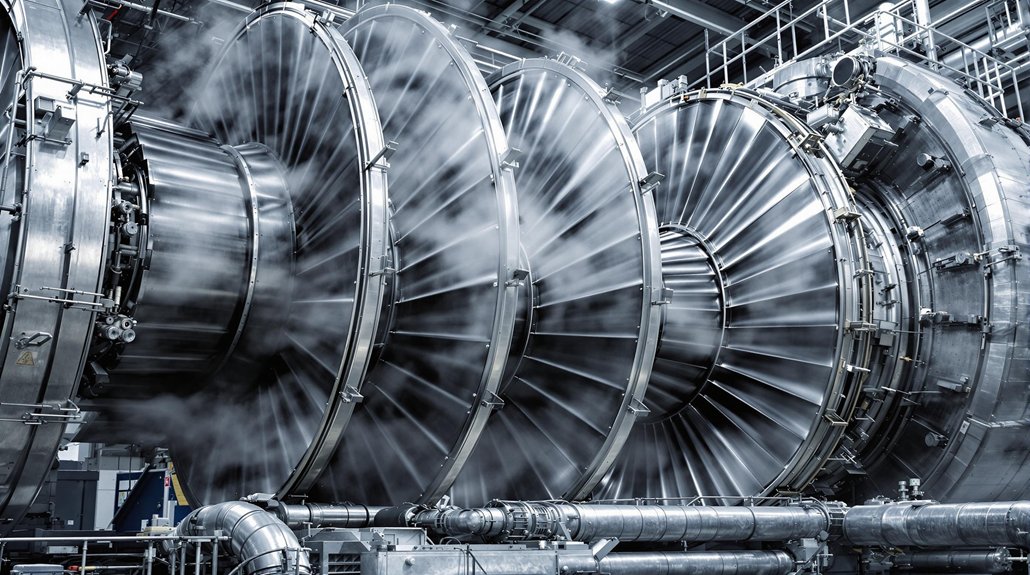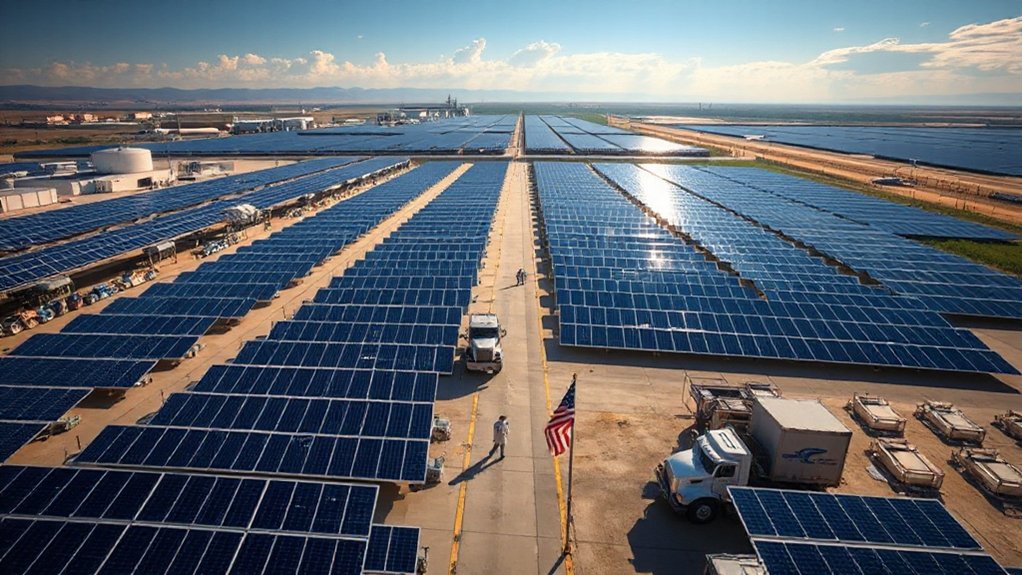Steam turbines pack quite a punch when it comes to efficiency, ranging from a modest 20% to an impressive 90%. The big players are multistage turbines, especially reaction types, which hit those peak numbers. Size matters – larger turbines generally perform better. Modern designs with 3D twisted blades and proper maintenance keep these powerhouses humming along. While simple gas turbines max out around 40%, steam turbines remain industrial champions. There’s more to this efficiency story than meets the eye.

While engineers have spent decades obsessing over steam turbine efficiency, the numbers tell a fascinating story of human ingenuity – and our constant struggle to squeeze more power from steam. The basic efficiency range of 20% to 50% might not sound impressive, but that’s just the beginning of this steam-powered saga. Regular maintenance and system monitoring are crucial for preventing degradation of turbine performance over time.
Let’s be real – size matters in the turbine world. Bigger turbines are more efficient, period. But the real magic happens when engineers get creative with multiple stages. These multistage beasts can hit efficiency ratings up to 90%. That’s right, 90%. It’s almost like they’re showing off at this point.
The type of turbine makes a huge difference too. Impulse turbines, the simpler cousins in the family, manage a respectable 60-70% efficiency. But reaction turbines? They’re the overachievers, reaching up to 90% efficiency. It’s like comparing a bicycle to a Tesla – both will get you there, but one’s clearly more sophisticated.
Temperature, pressure, and proper sealing are the holy trinity of turbine efficiency. Modern designs use fancy 3D twisted blade patterns and advanced materials that would make old-school engineers weep with joy. Steam enters superheated to maximize kinetic energy output. Digital controls keep everything running smoothly, like a obsessive-compulsive orchestra conductor with a steam fetish.
When compared to other power generation methods, steam turbines hold their own. They’re more efficient than simple-cycle gas turbines, which tap out at 40%. Sure, combined-cycle plants can hit 60% efficiency, and some fuel cells do even better, but steam turbines are the reliable workhorses of the power generation world.
Maintaining these efficiency levels isn’t a set-it-and-forget-it deal. Regular inspections, blade cleaning, and seal replacement are essential. Think of it like maintaining a high-performance car – skip the maintenance, and you’ll pay for it in reduced performance.
The good news? With proper care, these machines keep churning out power with remarkable consistency, proving that sometimes the best solutions are the ones we’ve been perfecting for generations.









